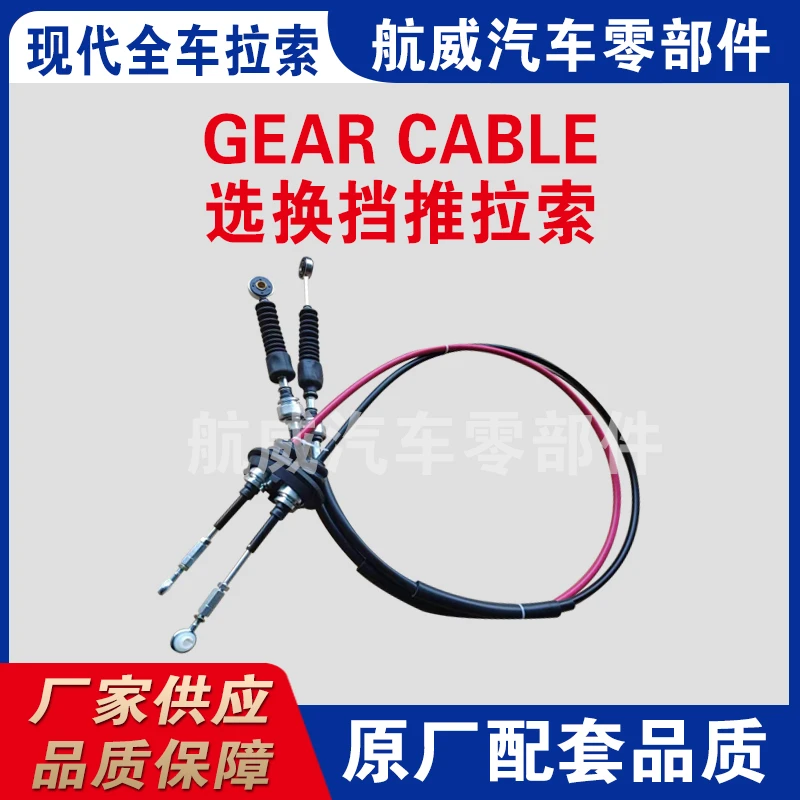carburetor cable
Understanding the Carburetor Cable Its Role and Maintenance in Your Vehicle
When it comes to the intricate systems that keep your vehicle running smoothly, the carburetor and its associated components play a pivotal role. Among these components, the carburetor cable is often overlooked yet essential for the optimal performance of older vehicles that still utilize carburetor technology. In this article, we will explore the function of the carburetor cable, its maintenance, and troubleshooting tips to ensure your car runs efficiently.
What is a Carburetor Cable?
The carburetor cable is a crucial component within the carburetor system of a vehicle. It connects the accelerator pedal to the carburetor itself, allowing the driver to control the air-fuel mixture that enters the engine. When the driver presses the accelerator pedal, the cable transmits that motion to the carburetor, adjusting the throttle plate's position. This adjustment determines how much air and fuel enter the engine, directly influencing the vehicle's acceleration and performance.
Function of the Carburetor Cable
The main function of the carburetor cable is to facilitate the throttle response of the engine. A well-functioning cable provides a smooth and responsive connection between the driver's input and the engine's power output. If the cable is malfunctioning—due to wear and tear, stiffness, or misalignment—it can lead to sluggish acceleration, stalling, or erratic engine behavior. In contrast, a properly adjusted and maintained cable ensures that the engine responds promptly to throttle inputs.
Signs of a Faulty Carburetor Cable
Recognizing symptoms of a faulty carburetor cable can save drivers time and money by preventing further damage to the engine or related systems. Some common signs include
1. Sticky Accelerator Pedal If the accelerator pedal feels sticky or requires more force than usual to operate, this could indicate the cable is not moving freely. 2. Erratic Throttle Response Inconsistent or unpredictable engine response upon pressing the accelerator can suggest a malfunctioning cable.
3. Stuttering or Stalling If the engine stutters or stalls during acceleration, it may be due to the cable not allowing the throttle plate to open fully.
4. Visible Damage Inspecting the cable for fraying, kinks, or rust can provide visual indicators of wear.
Maintenance of the Carburetor Cable
Routine maintenance of the carburetor cable is vital to ensure optimal vehicle performance
. Here are some practical stepscarburetor cable

1. Regular Inspection Check the cable regularly for signs of wear and tear. Look for frays, cracks, or corrosion that could impede function.
2. Lubrication A well-lubricated cable can enhance its performance and longevity. Use a suitable lubricant, ensuring it penetrates the cable housing. This can help prevent stiffness and reduce wear.
3. Adjustment Occasionally, the carburetor cable may require adjustment to ensure the correct throttle response. Refer to the vehicle's service manual for specific guidelines on making these adjustments.
4. Replacement If significant wear or damage is detected during inspection, replacing the carburetor cable is advisable. Not only does this restore proper function, but it also enhances the overall reliability of the vehicle.
Troubleshooting Tips
If you suspect that your carburetor cable is not functioning as it should, here are some troubleshooting tips
1. Check Cable Movement Ensure the cable moves freely when the accelerator pedal is pressed. If not, you may need to inspect for binding or obstructions.
2. Inspect Connections Check the connection points at both the accelerator pedal and carburetor to ensure they are secure and free from rust or debris.
3. Throttle Plate Movement With the engine off, manually operate the throttle plate to see if it opens and closes smoothly. If it doesn't, the issue may lie beyond just the cable.
4. Consult a Professional If troubleshooting fails to resolve the issue, it may be time to consult a mechanic or automotive professional who specializes in carburetor systems.
Conclusion
The carburetor cable is a small yet vital part of your vehicle's performance system. Understanding its function, signs of malfunction, maintenance routines, and troubleshooting methods can help keep your vehicle running smoothly and efficiently. Regular attention to this component ensures that drivers enjoy responsive acceleration, optimal engine performance, and a reliable driving experience. Whether you're a seasoned mechanic or a novice car owner, keeping tabs on the carburetor cable is an essential part of responsible vehicle maintenance.
-
Upgrade Your Control with Premium Throttle CablesNewsAug.08,2025
-
Stay in Control with Premium Hand Brake CablesNewsAug.08,2025
-
Experience Unmatched Performance with Our Clutch HosesNewsAug.08,2025
-
Ensure Safety and Reliability with Premium Handbrake CablesNewsAug.08,2025
-
Enhance Your Vehicle with High-Performance Clutch LinesNewsAug.08,2025
-
Elevate Your Ride with Premium Gear CablesNewsAug.08,2025
